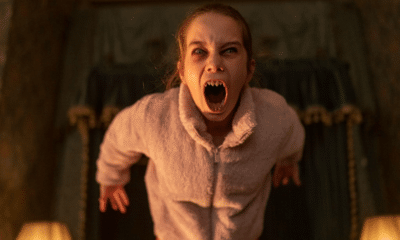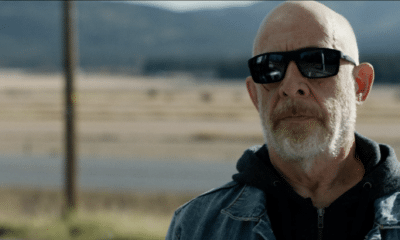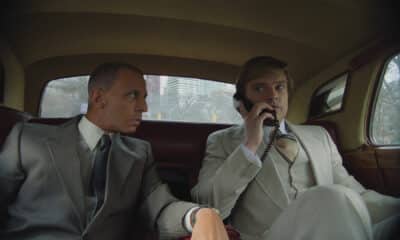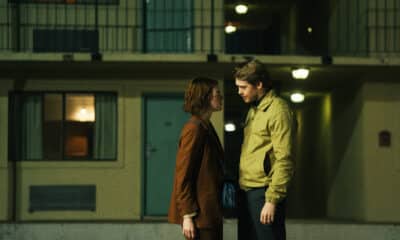Director: Shane Carruth.
Starring: Amy Seimetz, Shane Carruth, Andrew Sensenig.
Running Time: 96 minutes.
Synopsis: Kris (Amy Seimetz), a dynamic career woman, becomes the apparently random latest victim of an unnamed serial assailant who induces her into a disorientated state of compliance whilst embezzling her wealth and lifestyle. Later, Kris meets fellow victim Jeff (Carruth), and they both attempt to uncover their splintered existence in an unforgiving modern world.
After wowing the 2004 Sundance Film Festival with the bracing, experimental and philosophically wrought cult brainteaser PRIMER, American cinematic wunderkind Shane Carruth makes a triumphantly belated return with his sophomore directorial oddity UPSTREAM COLOR. Just as his first project saw the filmmaker shunning established filmic principles in his approach to implementing the science fiction genre, Carruth’s latest is more of an innate symphony of ostracism sung from a deeply idiosyncratic voice; an ambitious, inventive and hypnotically contemplative entity wholly beyond compare.
It is within Carruth’s lack of empathy for, and simultaneous defiance of, narrative codes and genre conventions that make his latest one of the most challenging and markedly unclassifiable films to emanate from American independent cinema in quite some time. It also makes descriptions of its sprawling and cerebral storyline all the more hard to comprehend, though to disregard such an occasionally perplexing and bold refusal to pander to a customary audience-pleasing formula would be a disservice to both the film and one’s take on its intellectually meditative outlooks. Here Carruth strikes a densely layered balance between the dissemination of his high-concept plot and overarching concerns, augmented as they are by an indelible passion for humanity, and creates a work of meticulous and methodically oblique beauty.
Far removed from the recognisability of stiff three-act storytelling structures, Carruth dons a formless manner in an attempt to simultaneously subvert and celebrate filmic formulations, using his work to spawn an all-encompassing confluence of guises, tones and rhythms. UPSTREAM COLOR is that most peculiar of hybrids; one that succinctly unifies shades of the crime thriller with an organically rendered and lyrical story exploring love and what it is to be in a relationship reinforced by an ingrained sense of dependency. The baffling, clinically observed catalyst for Kris and Jeff’s disorientation – which could be labelled as a destructive form of forced existential espionage – needs no clear explanations because Carruth spends the first half of the film wrapped in its own visually coiffured enigma, using performance and dreamlike tangents to blur the need for answers. This is extended into the film’s melodic second tier as the protagonists’ search for resolutions is reflected within the microscopic world of nature, parasites and pig farming, as is the ethereal presence of a hushed foley artist capturing the silent world through a microphone.
Similar to fellow distinct American auteur Terrence Malick, who imbues every facet of his latter-day craft with visual and aural ruminations on religion, Carruth – who also wrote, produced and edited the film whilst producing the ambient sound design and remarkable cinematography – shuns dramatic methods in favour of weaving together an astonishing symphonic sound palette with stark imagery. This creates a poignant insight into the all-pervasive interconnections of humanity unimpeded by dialogue or action; a seamless echoing of the stasis of life in continuous flux that, whilst arranged in a methodical but unknowable style, is distinctly cinematic storytelling handled by a learned practitioner.
![]() THE SUNDANCE LONDON FILM AND MUSIC FESTIVAL RUNS FROM 25-28 APRIL AT THE O2. FOR FURTHER INFORMATION AND TICKETS VISIT: http://www.sundance-london.com
THE SUNDANCE LONDON FILM AND MUSIC FESTIVAL RUNS FROM 25-28 APRIL AT THE O2. FOR FURTHER INFORMATION AND TICKETS VISIT: http://www.sundance-london.com

2 Comments
Leave a Reply
Leave a Reply
Latest Posts
-


Film News
/ 11 hours agoFirst ‘Transformers One’ teaser trailer debuts IN SPACE!
The animated feature film is heading to cinemas this September.
By Paul Heath -


Film Reviews
/ 11 hours ago‘Abigail’ review: Dirs. Matt Bettinelli-Olpin & Tyler Gillett (2024)
Matt Bettinelli-Olpin and Tyler Gillett direct this new horror/ heist hybrid.
By Awais Irfan -


Film Trailers
/ 12 hours agoNew trailer for J.K. Simmons-led ‘You Can’t Run Forever’
A trailer has dropped for You Can’t Run Forever, a new thriller led by...
By Paul Heath -


Film Trailers
/ 17 hours agoNew trailer for Shudder’s ‘Nightwatch: Demons Are Forever’
Coming to Shudder this May.
By Paul Heath

















Pingback: Review: Upstream Colour | Big Screen, Little Screen
Pingback: Top Ten of 2013 | Big Screen, Little Screen